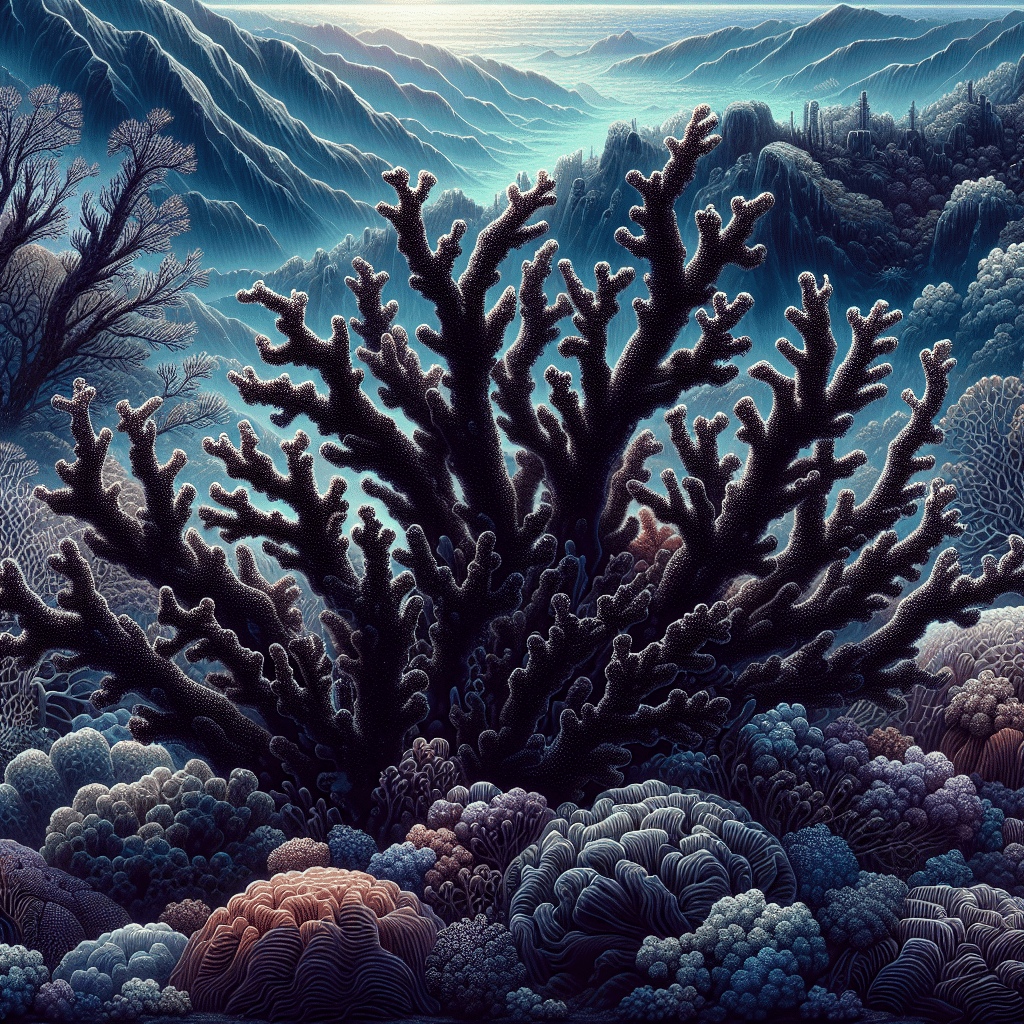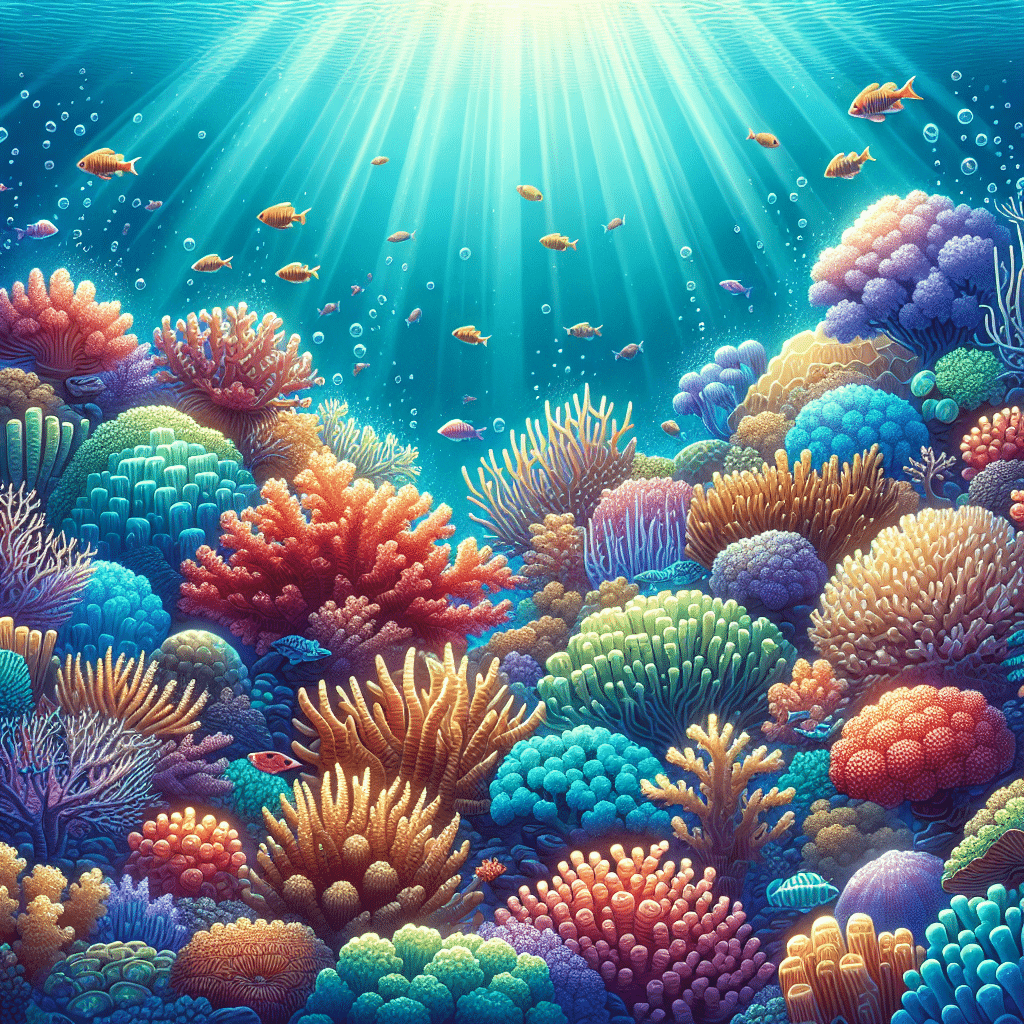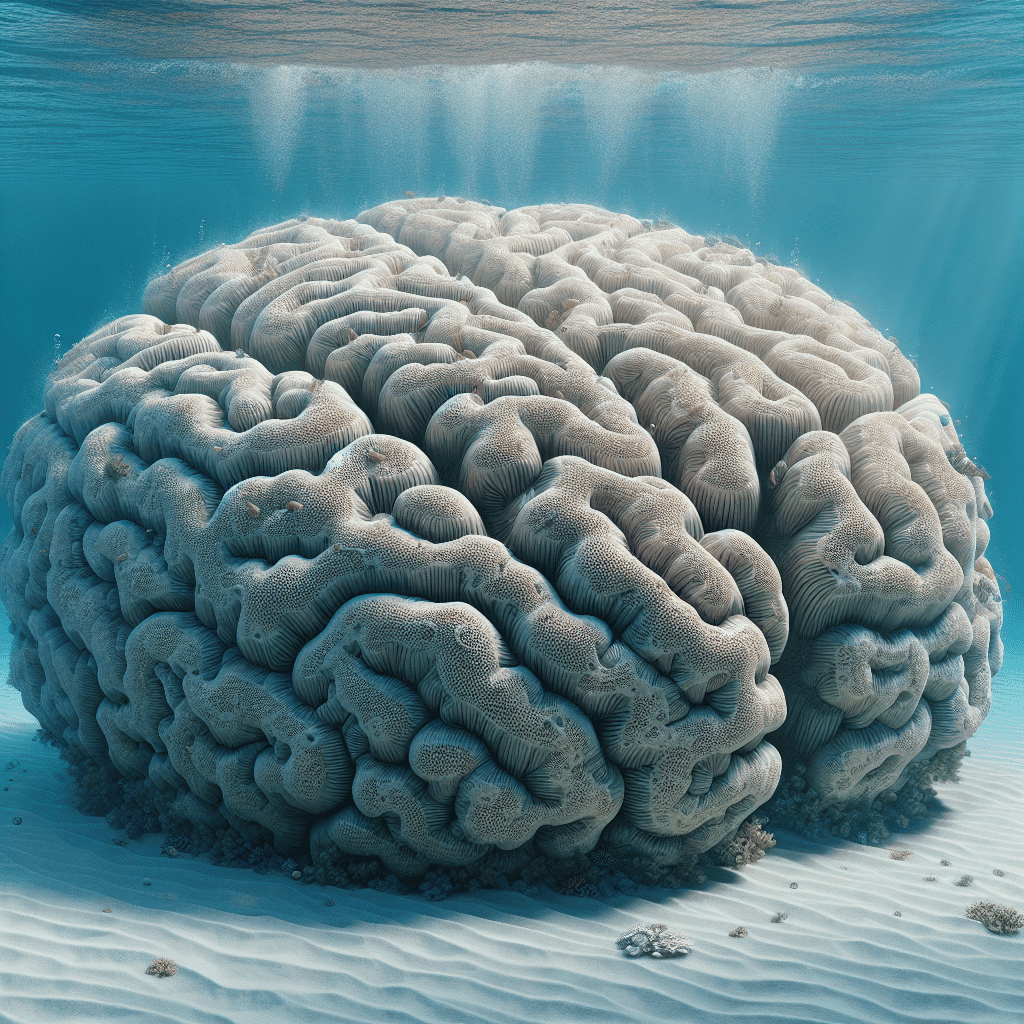Understanding Black Corals
Overview of Black Corals
I find black corals to be fascinating creatures. They belong to a cosmopolitan order found in nearly every oceanic location and depth, except for brackish waters. Most of them are located on continental slopes at depths of less than 50 meters (164 feet). Unlike their shallow water counterparts, black corals are made of softer chitin material and do not leave behind hard calcium carbonate structures when they die (Wikipedia).
Black corals thrive in environments where light is scarce, which makes them interesting additions to reef tanks. Their unique structure and adaptability make them a subject of curiosity for many fish tank and reef tank hobbyists.
Habitat and Distribution
Black corals can be found in every ocean, from shallow waters near the surface to the abyssal plains where it is darker than midnight. They are most commonly found in deep water habitats of tropical and subtropical seas. Some species may occur on reef slopes in waters as shallow as 1 meter (3 feet) to over 110 meters (about 300 feet), while others have been recorded from depths reaching up to nearly 6,000 meters (20,000 feet).
| Habitat Depth | Common Occurrences |
|---|---|
| 1 – 110 meters (3 – 300 feet) | Reef slopes in tropical seas |
| 100 – 1,800 meters (330 – 5,900 feet) | Deep water habitats |
| Up to 6,000 meters (20,000 feet) | Abyssal plains |
Understanding where black corals thrive helps me care for them better and appreciate their role in the ecosystem. If you’re interested in other types of corals, be sure to check out brain coral or mushroom coral for more options in your reef tank.
Reproduction and Importance
Reproductive Strategies
I find the reproductive strategies of black corals fascinating. They have the ability to reproduce both sexually and asexually throughout their lifetime. The process of asexual reproduction involves budding, which helps them grow and expand their colonies. Interestingly, some Hawaiian species can grow about 2.5 inches (6.4 cm) per year. They reach reproductive maturity after about 10 to 12 years, and their colonies can live for around 70 years (Waikiki Aquarium).
| Reproductive Method | Description |
|---|---|
| Asexual (Budding) | Allows for colony expansion and regeneration. |
| Sexual | Involves the release of eggs and sperm to create new polyps. |
This dual reproductive strategy increases their chances of survival in various environmental conditions.
Ecological Significance
Black corals play a crucial role in their ecosystems. They provide housing, shelter, food, and protection for a variety of marine life. In fact, black corals host unique communities of species on Hawaii’s deep reef slopes and worldwide. They create habitats for crustaceans, bivalves, and fish, with about 2,500 species found living on a single black coral colony (Smithsonian Ocean).
The presence of black corals contributes significantly to the biodiversity of coral reefs. Their unique structures and branching patterns not only increase their surface area for filter-feeding but also support the marine life that relies on them for survival. This ecological significance emphasizes the importance of protecting these corals as they are vital to the health of reef ecosystems.
Feeding Habits and Adaptations
The feeding habits of black corals are quite fascinating and essential for their survival. These corals are primarily carnivorous, which sets them apart from many other coral species.
Carnivorous Diet
Black corals primarily feed on meiofauna, especially zooplankton. They possess specialized polyps that have an oral disk surrounded by stinging tentacles, which they use to capture and digest their food. Unlike shallow water corals, black corals do not rely on symbiotic algae for nutrients. Instead, they actively consume floating particles from the water column.
To maximize their feeding efficiency, black corals grow in vertical, tree-like structures. This branching pattern increases their surface area, enabling them to capture more food as it drifts by. Here’s a quick overview of their feeding strategy:
| Feeding Strategy | Description |
|---|---|
| Diet | Carnivorous, primarily consuming meiofauna like zooplankton |
| Feeding Mechanism | Polyps with stinging tentacles to capture prey |
| Growth Form | Vertical and branching to enhance food capture |
Specialized Structures
The adaptations of black corals are noteworthy. Their polyps are equipped with tentacles that not only help in capturing food but also in digesting it. As mentioned earlier, these corals have developed unique branching patterns that enhance their ability to filter feed effectively. In some species from the Schizopathes genus, they have even evolved hooks at the base of their stems to anchor themselves to small pebbles or silty mud, which further aids in their stability and feeding.
Black corals also host various marine life, creating habitats for crustaceans, bivalves, and fish. This unique relationship not only benefits the corals by enhancing biodiversity but also contributes to the overall health of the reef ecosystem. If you’re interested in learning more about different types of corals, check out our articles on brain coral, mushroom coral, and torch coral.
Historical and Cultural Significance
Traditional Uses
Black corals have a rich history in various cultures, particularly among Pacific Islanders, who have utilized them for mystical and medicinal purposes. These corals were often incorporated into medical treatments and rituals, reflecting their significance in traditional practices (Wikipedia). The cultural importance of black corals is evident in how they were viewed as more than just marine organisms; they were seen as integral to health and spiritual well-being.
In addition to their traditional roles, black corals have also been harvested to create jewelry. This practice dates back centuries, but it has become increasingly popular in modern times. The unique appearance of black coral makes it a sought-after material for crafting beautiful pieces that appeal to collectors and tourists alike.
| Traditional Use | Description |
|---|---|
| Medical Treatments | Used in various healing practices among Pacific Islanders. |
| Rituals | Incorporated into spiritual ceremonies and cultural rituals. |
| Jewelry | Harvested and crafted into ornamental pieces. |
Modern Applications
Today, the primary modern use of black corals remains in jewelry-making. Artisans carve and polish the corals, transforming them into stunning accessories that capture the interest of buyers, particularly tourists. However, this demand raises concerns about sustainability and the health of black coral populations. Overharvesting has contributed to the decline of these corals, as well as environmental challenges such as ocean acidification and climate change (Wikipedia).
In regions like Cozumel Island in Mexico, the collection of black corals for crafts has led to significant ecological impacts. The extraction process occurs at depths of up to 180 feet, and while black coral has been protected under marine laws, illegal harvesting persists due to corruption and lack of enforcement (Panorama Solutions).
As a result, awareness campaigns are crucial to educate both tourists and local artisans about sustainable practices. By promoting conservation efforts, we can help ensure that black corals continue to thrive in their natural habitats while still being appreciated for their beauty in jewelry and art. For those interested in exploring other types of corals, check out articles on brain coral, mushroom coral, and montipora.
Threats to Black Corals
When it comes to caring for black coral in a reef tank, I’ve learned that understanding the threats they face is crucial for appreciating their needs and ensuring their survival.
Declining Numbers
Black corals are facing a significant decline in their populations. Factors like poaching, ocean acidification, and climate change are contributing to this worrying trend. Many hobbyists may not realize that black corals are not just beautiful additions to a tank, but they also play vital roles in marine ecosystems. As their numbers dwindle, we risk losing these important organisms. According to Wikipedia, black corals are expected to continue declining if these issues aren’t addressed.
| Threat Type | Description |
|---|---|
| Poaching | Illegal harvesting for jewelry and decor. |
| Ocean Acidification | Increased CO2 levels affecting coral health. |
| Climate Change | Rising temperatures altering habitats. |
Environmental Challenges
Black corals thrive in diverse oceanic environments, but they are increasingly challenged by environmental changes. As mentioned earlier, ocean acidification has a direct impact on their ability to maintain their structures. Additionally, global warming is altering their habitats, making it harder for them to survive.
These environmental challenges can lead to increased stress on black corals, affecting their growth and reproduction. The delicate balance of their ecosystems is disrupted, which can also impact other marine species that rely on corals for shelter and food.
For those interested in creating a healthy environment for black corals in their reef tanks, it’s crucial to monitor water quality and maintain stable conditions. Understanding these environmental challenges can help hobbyists make informed decisions about their tank setups and care routines.
To further enrich your reef tank, consider learning about different types of corals such as brain coral, mushroom coral, or torch coral. Each species has its own unique needs and plays a role in the larger ecosystem.
Classification and Characteristics
Taxonomic Information
Black corals belong to the order Antipatharia, which encompasses a fascinating diversity of marine life. This order includes 7 families, 44 genera, and around 280 distinct species. They are easily identifiable by their unique features, including their black, flexible skeletons and the absence of any significant protection from sediment. This makes them quite different from many other types of corals.
| Classification Level | Description |
|---|---|
| Order | Antipatharia |
| Families | 7 |
| Genera | 44 |
| Species | 280 |
Physical Features
The physical characteristics of black corals are what set them apart in the underwater world. They have small to medium-sized polyps and a chitin skeleton, which is lined with tiny spines. The black coloration of their skeletons adds to their distinctive appearance. Unlike many other corals, black corals have a flexible structure, allowing them to sway gently in ocean currents.
For those interested in other types of corals, you might want to explore brain coral, mushroom coral, or acropora. Each coral type has its own unique features and care requirements, making the world of corals incredibly diverse and exciting for hobbyists.
Conservation Efforts
Conservation Projects
I’ve come across several conservation projects focused on black coral that aim to protect these unique organisms. One of the main goals is to promote the use of alternative materials to reduce artisans’ dependence on black coral, which is often used in crafts. These projects not only help sustain the coral population but also raise awareness among tourists about the vulnerability of black corals.
Efforts include informative presentations and distributing materials that explain the importance of black coral and the consequences of purchasing crafts made from it. Tourists are educated about how their purchasing decisions can impact the survival of these corals. For more information about ongoing efforts, check out Panorama Solutions.
Awareness and Education
Awareness and education play a crucial role in the conservation of black coral. By informing the public about the ecological significance of these corals, we can encourage better practices in tourism and artisan trade. Educational programs often target both locals and visitors, ensuring they understand the importance of preserving marine ecosystems.
Partnerships with various organizations are also being sought to advocate for the creation of an environmental justice court in Mexico. This court would hold individuals and companies accountable for actions that harm the environment, including the destruction of black coral habitats.
By fostering a culture of respect and care for our ocean environments, we can contribute to the ongoing survival of black corals and the diverse ecosystems they support. If you’re looking to learn even more about different types of corals, check out our section on corals.
Black Corals in Different Habitats
Black corals are fascinating creatures that thrive in a variety of underwater environments. Understanding their adaptations and contributions to ecosystems can help me appreciate their role in marine life.
Adaptations to Deep Waters
Black corals can be found in every ocean, from shallow waters to the deepest abyssal plains where light is scarce. They thrive on pebbly seafloors, often in areas where other corals struggle to survive due to the lack of light (Smithsonian Ocean). Unlike shallow water corals, black corals are built from softer chitin material. When they die, they do not leave behind hard calcium carbonate structures.
Over time, black corals have adapted to the deep sea by growing in specific branching patterns. This design helps increase their surface area, enhancing their ability to filter-feed in areas with limited food sources. They have been around since the Silurian Period, diversifying and taking advantage of small drifting creatures like zooplankton (Smithsonian Ocean).
Unique Ecosystem Contributions
The contributions of black corals to their environments are significant. They create important physical habitats for a variety of marine life, with about 2,500 species residing on a single black coral colony. These species include crustaceans, bivalves, and various fish.
Their colonies, made up of hundreds of individual polyps, provide shelter and feeding grounds for these organisms. Black corals host unique communities of marine life, some of which are new to science. They play a crucial role in maintaining biodiversity in their ecosystems, particularly in Hawaii’s deep reef slopes (Waikiki Aquarium).
In summary, black corals not only adapt to their deep-water habitats but also contribute significantly to the health and diversity of marine ecosystems. Their unique structures and relationships with other marine life make them essential players in the underwater world. If you’re interested in learning more about various types of corals, feel free to explore other species like brain coral or torch coral.
Research and Discoveries
Scientific Findings
I’ve come across some fascinating research about black corals that really sheds light on their history and evolution. According to scientists from the Smithsonian, black corals likely originated from a single species that lived around 600 million years ago, thriving in environments between the shallows and the deep sea. This kind of information helps us understand how different species diverged from a common ancestor over time.
The Leiopathidae lineage of black corals is particularly interesting; it was the first to separate from other corals and tends to inhabit depths of 1,300 to 2,600 feet (400 to 800 m). They grow in a tree-like structure, which is quite unique among corals (Smithsonian Ocean).
Another intriguing aspect is how black corals adapted during the Jurassic period when the ocean’s waters became acidic. While many shallow-water corals struggled to survive, black corals took advantage of the open habitat and lack of competition. This resilience speaks volumes about their evolutionary success in harsh conditions.
Evolutionary Insights
The evolutionary journey of black corals is truly remarkable. They have developed specialized branching patterns that enhance their ability to filter-feed in the deep sea. Some species, particularly in the Schizopathes genus, even evolved hooks at the base of their stems to secure themselves to small pebbles or silty mud, showcasing their adaptability to their environment.
Currently, there are over 150 known species of black corals, with at least 14 species found in Hawai’i alone (Waikiki Aquarium). This diversity highlights their evolutionary success in various marine ecosystems.
By understanding the scientific findings and evolutionary insights into black corals, I can better appreciate their role in reef tanks. Their unique adaptations and historical significance make them a fascinating subject for fellow fish tank enthusiasts like me. If you’re interested in other types of corals, check out articles on mushroom coral or brain coral to expand your knowledge further!



